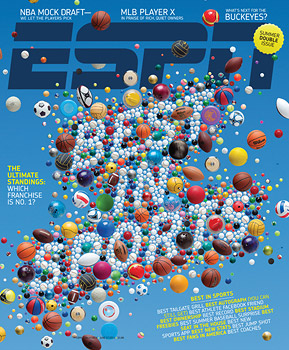The news just keeps getting better at The New York Times and the Financial Times, as new numbers indicate that paywalls really work if you’re among the most respected news organizations in the world.
The FT reported that it has breached the 250,000 subscriber mark, having grown digital subscriptions 30% during the last year. The FT charges about $390 for an annual subscription to its website, which would indicate total digital subscription revenues of nearly $100 million if everyone was paying the full annual price. However, the actual total is almost certainly lower than that, since print subscribers pay discounted fee and not all subscriptions are annual. However, the performance is still impressive. The FT said 100,000 of those subscriptions are from corporations.
 The Times is confident enough in its paywall experiment to declare victory and begin branding itself as a social media poster child. Times publisher Arthur Sulzberger took the stage at the London School of Economics last week to crow about a report by lead mining firm NetProspex that declares that the Times is the number one most social company in the U.S., based upon the total number of employees using social media and their fan/follower reach. Sulzberger said the designation recognizes the success of individual employees, such as Nicholas Kristof and C.J. Chivers, at building their own social followings.
The Times is confident enough in its paywall experiment to declare victory and begin branding itself as a social media poster child. Times publisher Arthur Sulzberger took the stage at the London School of Economics last week to crow about a report by lead mining firm NetProspex that declares that the Times is the number one most social company in the U.S., based upon the total number of employees using social media and their fan/follower reach. Sulzberger said the designation recognizes the success of individual employees, such as Nicholas Kristof and C.J. Chivers, at building their own social followings.
“In 2000, we were #3 in terms of uniques behind the Washington Post and USA Today,” Sulzberger said. “Today we’re proudly the #1 newspaper website, with a worldwide audience of over 45 million uniques…and that’s after we started asking readers to pay for unlimited access to our content.” The Times’ aggressive adoption of Twitter, in particular, has paid off in word-of-mouth awareness. Sulzberger said a Times story is now tweeted every four seconds.
Read a transcript of his comments for more examples. Note, in particular, the emphasis on “digital first,” and the speed with which the Times is creating hash tags and real-time Twitter feeds to lead the conversation on breaking news. Sulzberger also has some interesting points about the reading habits of mobile users and how they differ from those of traditional print subscribers. The ability to “literally get into bed” with readers is an opportunity to expand the Times’ franchise, not simply an adjunct to the print product.
The good news continues overseas, where News International reported a 10% increase in digital subscriptions to the Times and Sunday Times over the past three months to a total of more than 111,000. The company said it would start reporting monthly digital subscription updates, indicating confidence that the number will grow.
Does this mean paywalls are the answer to the industry’s woes? We’ll believe that when we start hearing similar success reports coming from major metro dailies that aren’t The New York Times or that don’t deliver high-value financial news. For now, publishers can take some comfort in the fact that the hemorrhaging appears to be under control. Print circulation is actually growing in emerging markets like Latin America and Southeast Asia, and North American advertising revenues actually were up slightly last year.
Nonprofits Gain Traction
 Nonprofit news organizations are some of the most promising candidates to replace the investigative journalism that’s been lost to cost-cutting in mainstream media, but one of the keys to success is to go beyond simply filling that gap. That’s according to an impressive new report from Knight Foundation, co-authored by our good friend Michelle McLellan, that looks at critical success factors for nonprofit success.
Nonprofit news organizations are some of the most promising candidates to replace the investigative journalism that’s been lost to cost-cutting in mainstream media, but one of the keys to success is to go beyond simply filling that gap. That’s according to an impressive new report from Knight Foundation, co-authored by our good friend Michelle McLellan, that looks at critical success factors for nonprofit success.
Poynter’s Rick Edmonds has an excellent summary of the study, which looked at the business models of seven promising local ventures, ranging from the ambitious Texas Tribune to the much smaller, hyperlocal St. Louis Beacon. While none has reached self-sustainability just yet, these startups are learning tactics that can serve as a model to others.
The report cites three “next-stage” opportunities, but they can really be boiled down to one truth: Go beyond replacing the newspaper model. Successful ventures are leveraging the unique advantages of online media to deliver information that can’t be expressed in print, such as databases and first-person video. That means hiring technology and data analysis specialists, not just reporters. The featured nonprofits are also diversifying their income streams beyond a few big foundations to include paid memberships, syndication fees, events and sponsorships.
Knight’s study is an encouraging sign that investigative journalism will not perish from the earth, and may even be reborn in a smaller, focused and more-efficient form.
Go Google+
Has your news organization registered its Google+ page yet? Better hurry. Google opened up its rapidly growing social network to company pages on Monday, and news operations like The New York Times have already staked a claim (tagline: “All the News That’s Fit to +”). Even if you have no immediate plans to build a Google+ outpost yet, you want to be sure to grab your brand before somebody else does. As many businesses learned with Twitter, failing to register accounts on new social networks can create an embarrassing situation when others begin speaking on your behalf.



 Nikki Usher and Seth C. Lewis dig into the
Nikki Usher and Seth C. Lewis dig into the 












